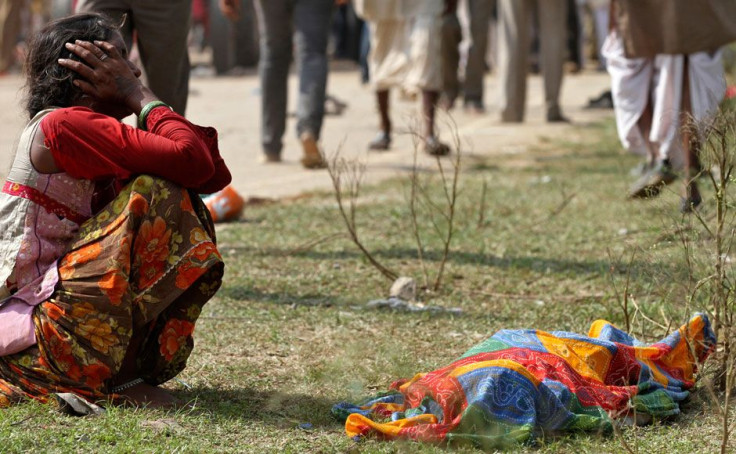Tragedy At Ratangarh Temple: Why Do Deadly Stampedes Occur During Indian Religious Festivals?

At least 115 people have died and 100 more injured during a stampede near the Ratangarh Temple in the Indian state of Madhya Pradesh during the Navratri festivities. People died either by getting crushed, or drowning in the Sindh river below. Most of the victims were women and children, officials said.
"People were jumping off the bridge to save themselves, but they could not swim against the tide. I also saw children being tossed from the bridge, only to be washed away," a survivor named Manoj Sharma told the Times of India. "I saw a mother desperately trying to protect her baby amidst the swelling, rushing crowds. But both died before my eyes. It was most horrific incident of my life."
India Today reported that that tragedy, which occurred in the Datia district, was caused by rumors that the bridge that pilgrims were using was about to collapse. However, other reports claimed that the stampede was triggered by people trying to jump ahead of their place in line, while police used batons to control their movements. A similar stampede-related incident occurred at the same spot seven years ago, killing 50 people. The local Deputy Inspector General of Police, Chambal Range, D.K. Arya, warned that the final death toll could climb higher.
Madhya Pradesh state officials have commenced a judicial inquiry into the matter. They also have promised cash compensation to the relatives of victims killed in the stampede, as well as to the wounded. But the leader of the opposition in Madhya Pradesh Assembly Ajay Singh blamed official "mismanagement" for the stampede, citing lack of water and medical care for survivors and a delay in first-aid delivery. Singh is a member of the Congress Party, which rules the national government of India, but represents the opposition in Madhya Pradesh, behind the right-wing Bharatiya Janata Party (BJP).
Madhya Pradesh’s Chief Minister Shivraj Singh Chouhan, a member of BJP, is facing calls to resign over the incident. "Had there been adequate police, administration and health officials at the temple site, the loss of lives could have been averted," said Kantilal Bhuria, a local Congress leader.
Outrage over the deaths are also escalating within India media. "Cops learnt no lessons from 2006 stampede", blared a headline in The Hindustan Times newspaper, which said the tragedy "underlines the sheer ineptitude of the authorities responsible for the safety and security" of pilgrims.
Sharma, the aforementioned survivor, also said crowd control measures at the site were totally inadequate. "It was a huge administrative lapse on part of the state government. There were no policemen to control the crowds. Big vehicles carrying devotees were allowed to ply on the bridge and this caused the tragedy," he said. But the home minister of Madhya Pradesh, Uma Shankar Gupta, insisted security was adequate at the temple. "There were safety measures in place, this is an annual event," he told reporters. "We don't yet have information on how this happened, as our focus is on the rescue effort."
Such tragedies occur frequently in India, particularly at religious festivals and sometime become a political issue. In 2011, more than 100 were killed at a festival in the state of Kerala, in 2008; more than 220 people were killed at a stampede at the Chamunda Devi Hindu temple inside Mehrangarh Fort in Jodhphur. Essentially, stampedes are the result of a large crowd of people entering a small enclosed area (like pilgrimage centers) amidst la lack of crowd-control or safety measures.
Rajan Zed, a Hindu activist in the United States, condemned the Indian government for failing to prevent such needless tragedies. Although India is on track to become a global power it cannot even handle a domestic event properly, having yet to come up with a foolproof plan to manage large crowds, he complained. “India failed or refused to learn lessons from the previous stampedes as these [events continue] to happen.” Zed added. “It [is] blight on [the] country.”
He also suggested that India’s newly minted wealthy, who have “enormously benefitted” from India’s economic growth, should come to the aid of the victims and their families.
© Copyright IBTimes 2024. All rights reserved.





















